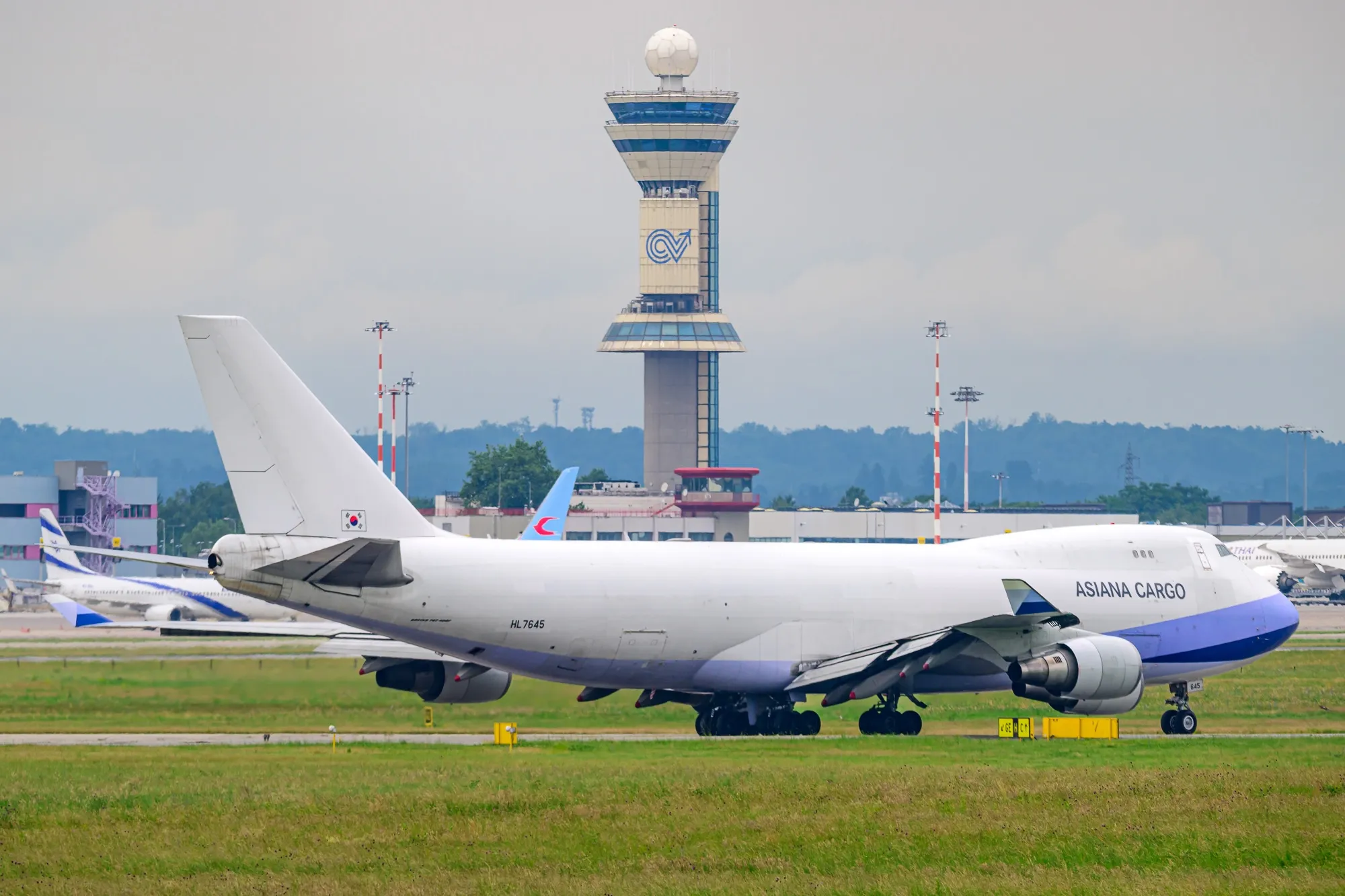MILAN — With climate change making extreme weather more common, airports around the world are being forced to rethink how they operate.
A lot of airport infrastructure was built decades ago, and now it’s struggling to keep up with challenges like heavy flooding, intense heat waves, and even occasional seismic activity. But not every airport is standing still; some are starting to take action.
One example is Milan Malpensa Airport (MXP), Italy’s second-busiest air hub. It’s begun taking serious steps to adapt to the growing risks. With support from the European Union, Malpensa has launched Re-MXP, a multi-million-euro climate adaptation project aimed at keeping the airport safe and running smoothly, even during natural disasters.
What is the Re-MXP Project?
Launched in 2021, Re-MXP, which stands for Resilienza Malpensa, is a wide-ranging infrastructure resilience initiative led by SEA Milan Airports and co-financed by the European Union via the Connecting Europe Facility (CEF). The project is financed by a €7.6 million EU grant, with a total investment exceeding €24 million.It focuses on three primary resilience goals that align with both EU climate adaptation objectives and international aviation safety standards.
1. Managing Rainwater and Runoff
Back in 2021, a flash flood hit Malpensa hard, and it was a wake-up call. After that, the airport carried out a detailed assessment to figure out exactly which areas were most vulnerable to flooding. What came out of that study now forms the backbone of the Re-MXP project’s flood protection strategy.
As part of the plan, Malpensa is upgrading large sections of its drainage and pipeline system to cope with heavier and faster rainfall. It’s also installing underground storage tanks to manage stormwater during peak weather events. Since the airport lacks natural outlets for excess water, new infiltration wells are being added, while older ones are being reworked to speed up absorption.
These upgrades are being carried out across five of the airport’s most flood-prone zones. Once finished, they’re expected to make a big difference, keeping airport operations running even during major storms and cutting down the risk of runway flooding, delays, and last-minute cancellations.
2. Strengthening Malpensa for Seismic Shocks
Even though Milan isn’t known for major earthquakes, Malpensa Airport isn’t taking any chances. Terminal 1 is currently being upgraded to make it more resilient in case a quake ever does hit. The work is being done in line with modern seismic safety standards and EU-wide infrastructure guidelines.
The idea is simple: even if the risk is low, the consequences could be massive. These upgrades are designed to ensure that essential airport operations can continue uninterrupted, even in the event of an unexpected tremor. It’s also about protecting key infrastructure and avoiding costly disruptions.
3. Smart Monitoring, In Real Time
As part of the latest phase of the Re-MXP project, Malpensa is implementing an intelligent monitoring system that’s meant to do a lot more than just collect data. It’s designed to help the airport stay ahead of problems, not just respond to them after the fact.
This system combines real-time data collection with predictive maintenance tools, allowing it to monitor airport conditions and identify potential issues before they escalate.
What this represents is a shift in mindset. Instead of reacting to breakdowns or disruptions, the airport is now building a system that anticipates them. It’s a more innovative, faster, and more resilient way to manage critical infrastructure, especially at a time when climate pressure is only getting worse.
Climate Trends: Rising Heat, Risk at Malpensa
The numbers are precise: it’s getting hotter, and Malpensa isn’t immune. According to long-term climate models, average temperatures in the region are expected to rise by about +1°C by 2040, and possibly +2°C by 2060, compared to the 1986–2005 baseline. On paper, those numbers might not seem huge. But in reality, they point to warmer winters, longer, hotter summers, and a lot more stress on everything that keeps an airport running.
This kind of heat doesn’t just make passengers uncomfortable; it puts real pressure on infrastructure, flight operations, and maintenance teams. Runways get hotter, systems wear down faster, and delays become more likely.
Importance of This Project
Milan Malpensa isn’t just one of Italy’s busiest airports; it’s a key gateway for both passengers and cargo moving across Southern and Central Europe. Because of its role in the Trans-European Transport Network (TEN-T), what happens at Malpensa doesn’t just affect Italy; it affects the entire region.
That’s why preparing the airport for climate-related risks is essential. The Re-MXP project is the first on-the-ground rollout of SEA Milan Airports’ larger Climate Change Adaptation Plan, and it sets an example for how other airports across Europe can start adapting their infrastructure too.
As SEA Milan Airports COO Alessandro Fidato put it:
“We’re investing today to ensure Malpensa continues operating safely in tomorrow’s climate, while protecting connectivity and enhancing passenger experience.”
Challenges Posed By Climate Change
Airports like Milan Malpensa aren't alone in this struggle. All over the world, airports are facing extreme weather events, which have disrupted operations.
1. Flooding and Sea-Level Rise
Many of the world’s busiest airports were built on low-lying coastal land, mainly because it’s flat and close to big cities. But now, that once-smart location is starting to backfire. Rising sea levels and heavier rainfall are turning airports into flood zones. And when water gets in, things fall apart quickly. Entire runways and terminals can be forced to shut down with little warning. Flights get delayed, sometimes canceled in the hundreds, and thousands of passengers are left stranded.
Take Dubai International Airport (DXB) for example. In 2024, record rainfall brought the entire airport to a standstill. A total of 832 flights were canceled, and many others were either stuck in holding patterns or had to be diverted. Not only did that cause delays, it also meant more fuel burned and more carbon emissions released, making the climate problem even worse..
2. Extreme Heat
In many parts of the world, temperatures are now regularly climbing past 45°C, and that kind of heat doesn’t just make flying uncomfortable, it makes it harder to fly.
Here’s the thing: when air heats up, it becomes less dense. And that matters a lot for planes. With less dense air, it takes more effort for an aircraft to generate lift. Engines have to work harder, which means burning more fuel to get off the ground, a move that drives up both costs and emissions. Airlines are often forced to offload cargo and passengers, which can lead to revenue loss and, of course, cause inconvenience to the travellers.
And it’s not just the aircraft that suffer. Heat can beat down on airport infrastructure, too. Runways, taxiways, and tarmac areas are all vulnerable when temperatures soar. In some cases, the surface softens or buckles. There have even been instances where runways started to melt; that’s how extreme it’s getting.
3. Storms, Hurricanes, and Airport Chaos
Storms and hurricanes aren’t just showing up more often; they’re hitting harder, too. Over the past few years, these extreme weather events have become a significant disruptor for air travel. Flights can be grounded for days. Airports shut down. And the damage? Sometimes it’s in the hundreds of millions of dollars, all in just a few hours.
These storms don’t just delay travelers. They can wreck aircraft, tear apart terminals, flood runways, and knock out power or communication systems. When that happens, it’s not just about inconvenience; it’s about safety and survival.
4. Seismic Activity
While not directly caused by climate change, earthquakes remain a serious challenge for airports located in seismically active regions. A strong earthquake can damage ground infrastructure, knock out power, and disrupt critical communication between aircraft and air traffic control, potentially forcing diversions or grounding operations altogether.
Beyond immediate damage, repeated seismic activity can gradually weaken terminal structures and runway foundations over time, posing long-term safety and maintenance concerns.
Looking Ahead
The Re-MXP project at Milan Malpensa is a sign of how airports are beginning to take climate adaptation seriously. With unpredictable weather, rising temperatures, and growing environmental pressure, airports can’t afford to wait for problems to happen before acting.




